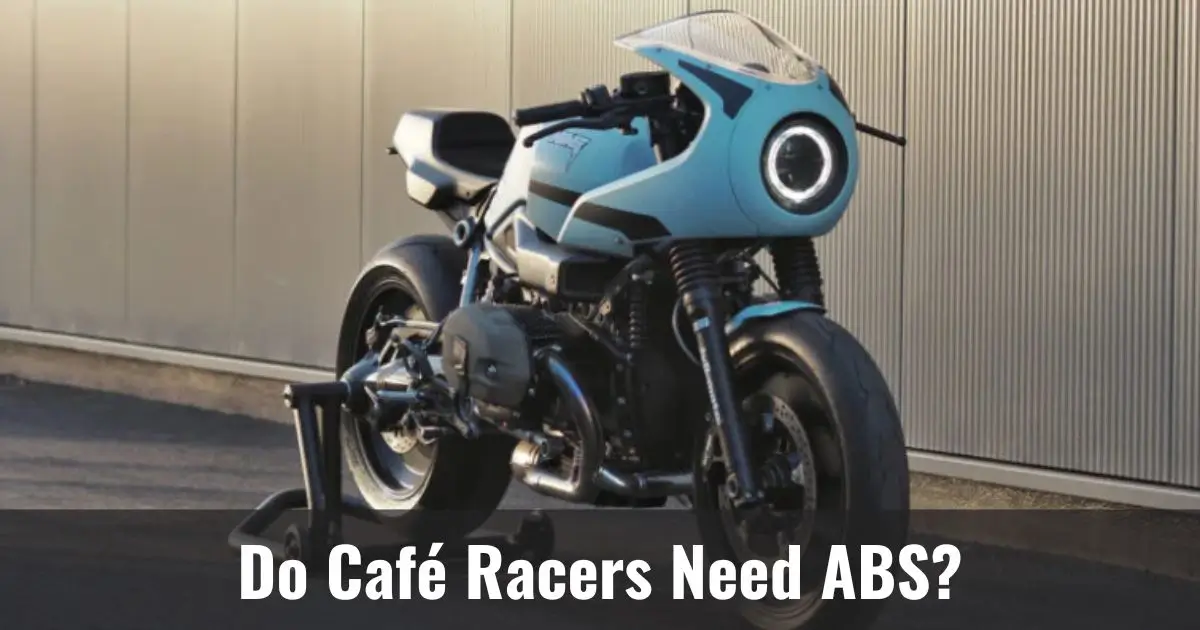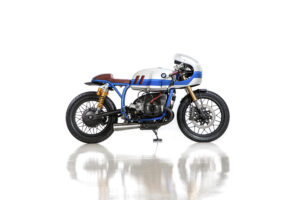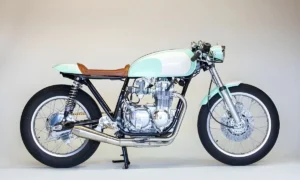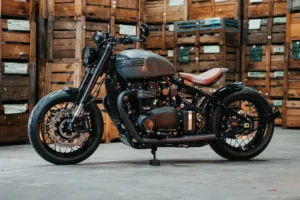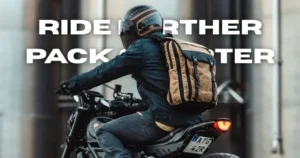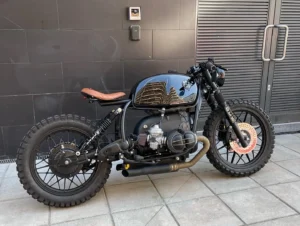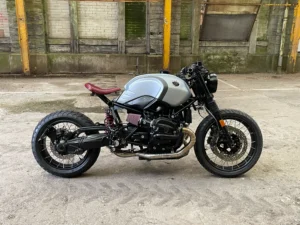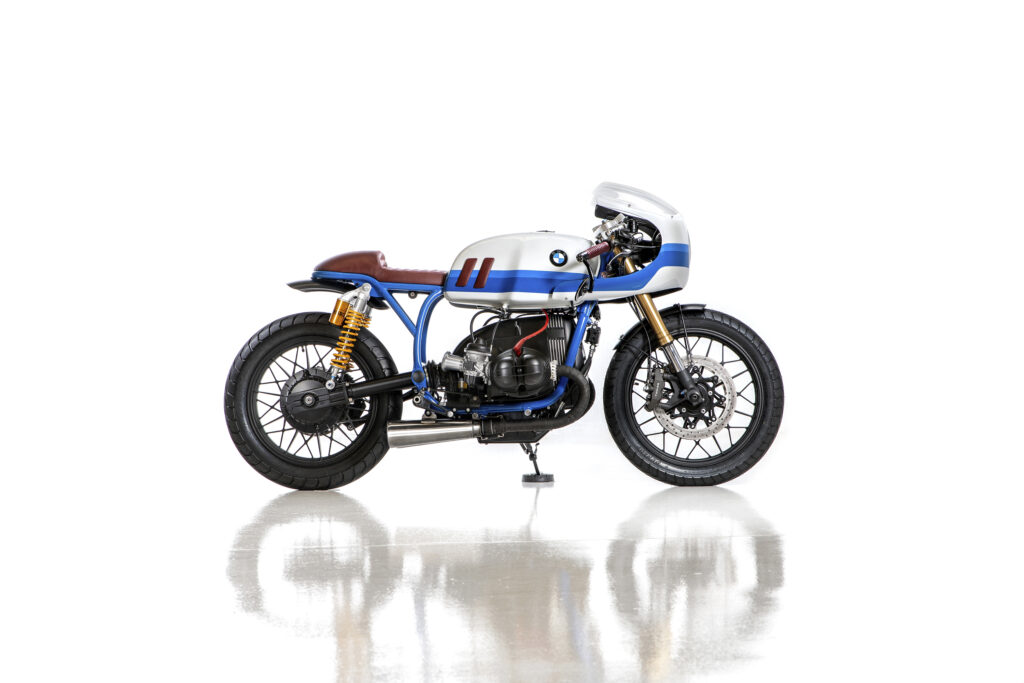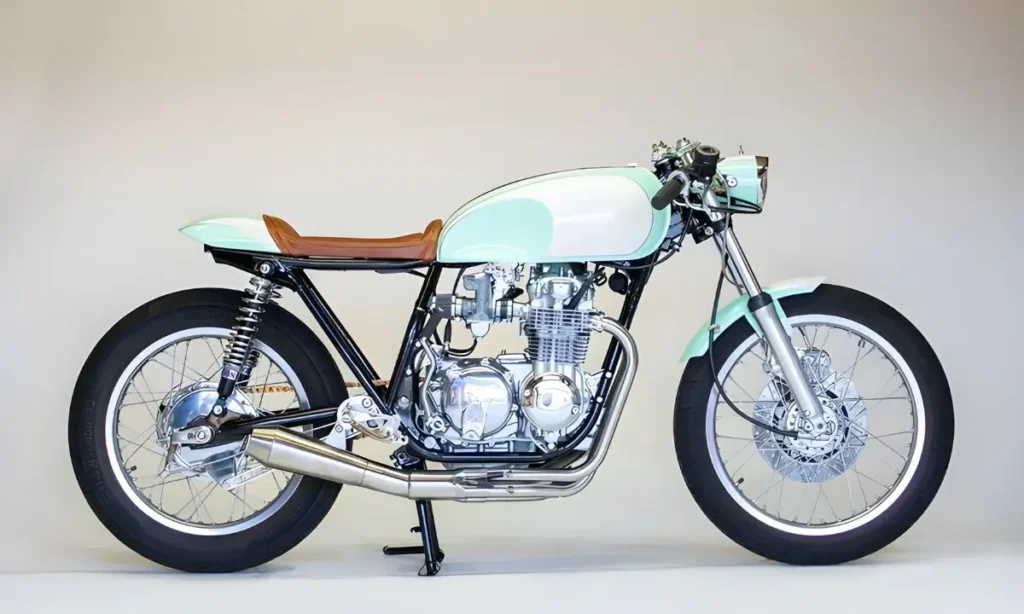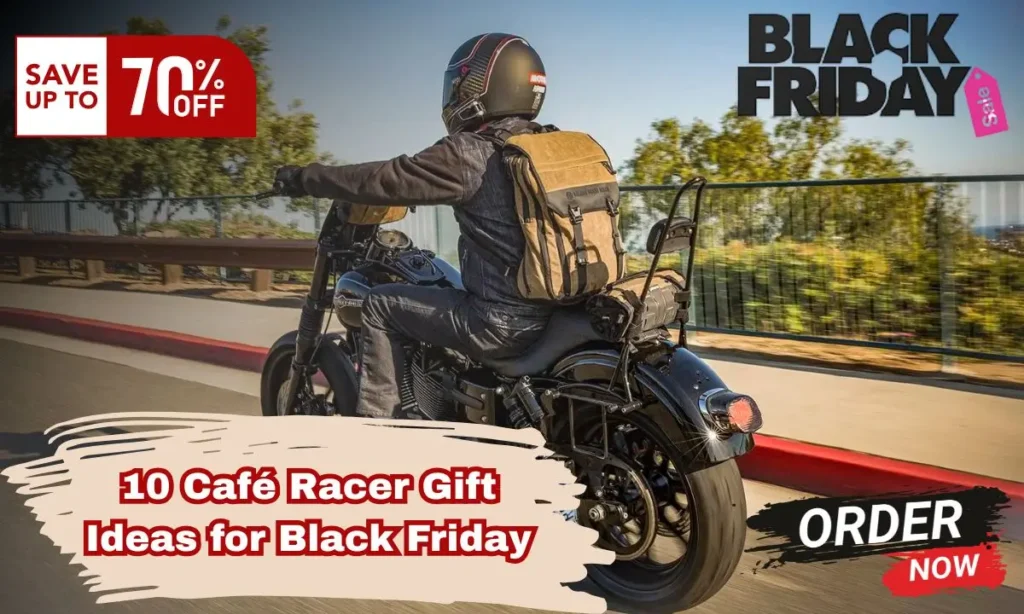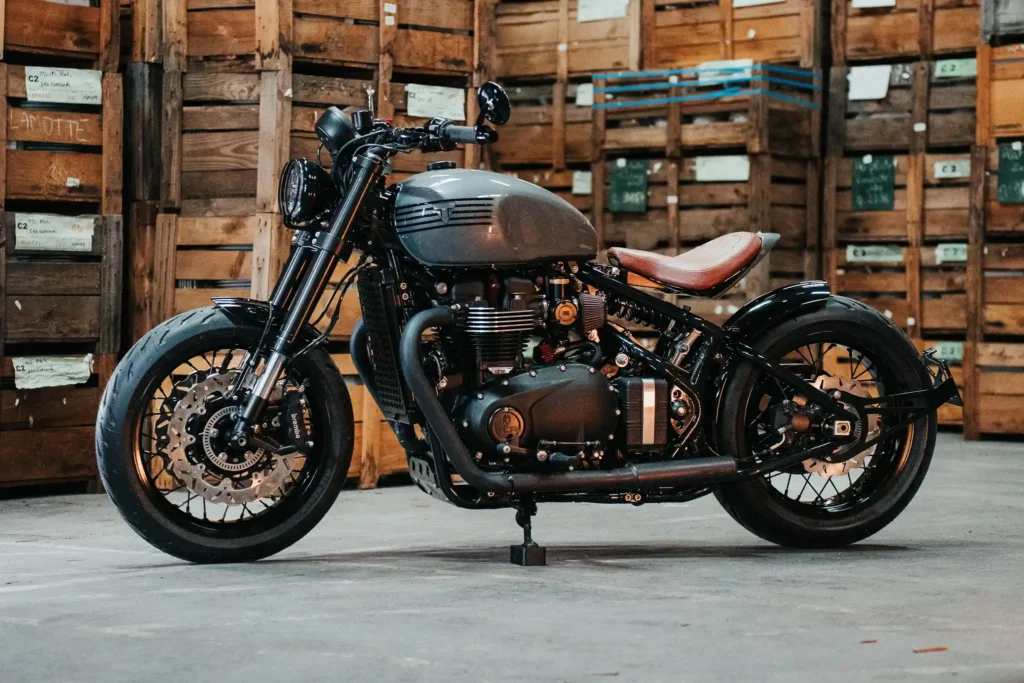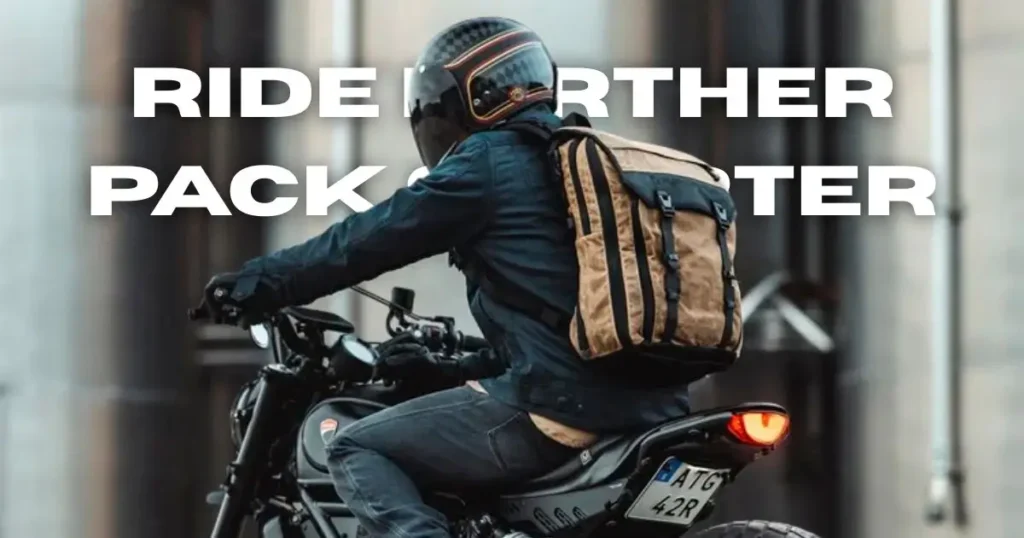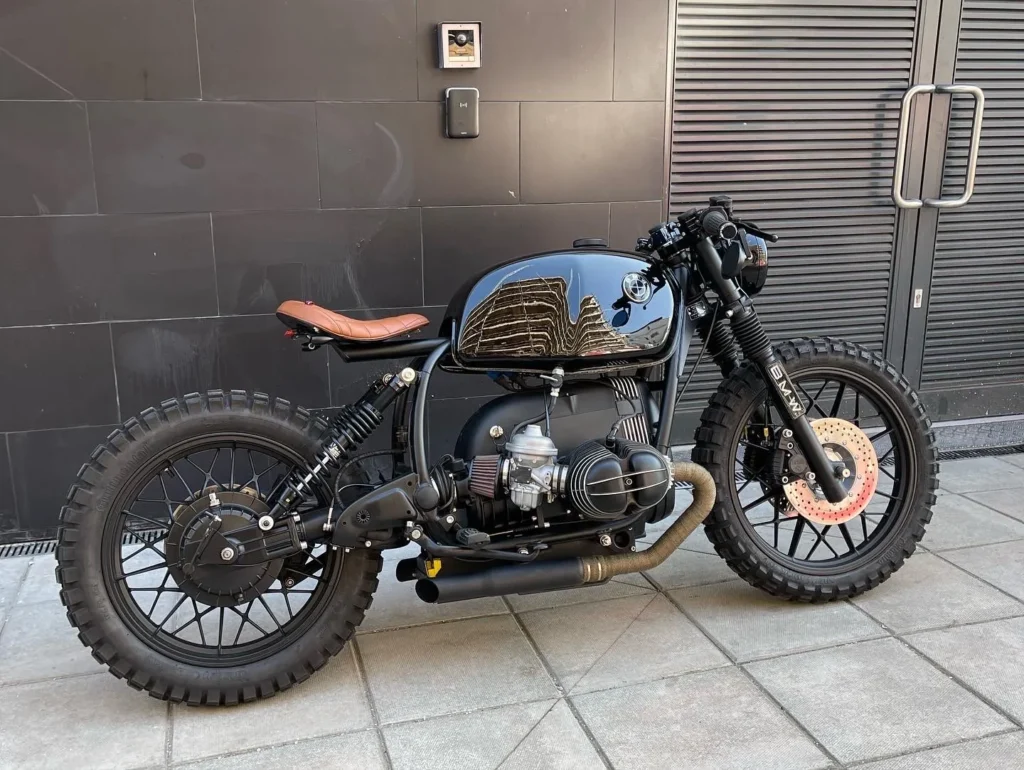Table of Contents
ToggleAnti-lock Braking System (ABS) is now standard on many modern motorcycles, but for café racer enthusiasts, the choice isn’t always simple. These bikes are often built for style, minimalism, and a throwback feel. Adding ABS raises questions about function versus form. Riders who build or modify café racers usually prioritize appearance, ride feel, and simplicity. But safety also matters—especially on unpredictable roads. This article explores whether ABS belongs on a café racer. You’ll learn what ABS does, when it helps, and how it fits with the design and purpose of these custom-styled machines.
What is ABS and How Does It Work?
ABS stands for Anti-lock Braking System. It prevents the wheels from locking when braking hard. Wheel lock can make a motorcycle skid and lose control. ABS helps stop that from happening.
It works through sensors on the wheels. These sensors check how fast the wheels are turning. If one wheel suddenly slows down too much, the system reduces brake pressure for a moment. This lets the wheel turn again before applying more braking force. It happens very fast, many times each second.
ABS does not stop the bike faster in all cases. But it helps keep the rider in control. Especially on wet roads, gravel, or during emergency stops. ABS is now common on new motorcycles, including sport and touring types. But it’s still rare on many custom café racers or vintage models.
Typical Riding Style and Use of Café Racers
Café racers are usually built for short, fast rides on city streets or open roads. They are not made for long touring or off-road travel. Most riders use them for casual weekend rides, commuting, or urban exploring. These bikes are known for quick handling, light weight, and a minimalist look.
Many café racer riders enjoy customizing their motorcycles. The focus is often on speed, sound, and style. Because of this, some riders avoid electronic features like ABS. They want a simple, raw riding experience. They prefer full control over every part of the bike.
Café racers also tend to ride in good weather and during the day. That reduces the need for safety systems in some cases. But traffic, road dust, and wet patches are still risks in cities. Quick stops can happen anytime. In these moments, ABS can play a useful role, even on a light, custom motorcycle.
Pros of Having ABS on a Café Racer
ABS can improve the riding experience in practical ways. While café racers focus on looks and simplicity, some riders want extra safety too. Below are clear advantages of using ABS on a café racer:
- Reduces risk during emergency stops
ABS helps the rider keep balance when braking suddenly. It lowers the chance of skidding or sliding, especially in traffic. - Improves control on wet or dirty roads
When roads are slippery, ABS makes it easier to stop safely. It adjusts braking pressure to match the road surface. - Helps new riders build confidence
Less experienced riders often feel nervous about braking. ABS supports smoother control, especially in hard stops. - Can lower accident chances in cities
Many café racers ride in busy areas. ABS gives more control in sudden braking situations caused by cars or people. - May increase resale value of the bike
Buyers who care about safety may prefer motorcycles with ABS. This can make the bike more attractive later. - Works in the background without changing ride feel
Modern ABS systems are small and quiet. They only activate when needed. The rider still feels in charge.
Each of these benefits supports safer, more reliable riding. Riders who enjoy café racers but want extra protection can consider ABS a useful option.
Cons of Adding ABS to a Café Racer
While ABS offers safety benefits, it also comes with drawbacks. These issues are important for riders who care about the style, feel, and cost of their café racer. Here are the main concerns:
- Breaks the classic look of the bike
ABS needs sensors, wires, and a control unit. These parts can look out of place on a clean, vintage-style build. - Adds weight to a light motorcycle
Café racers are known for being lightweight. ABS components increase the total weight slightly, which may affect how the bike feels. - Raises the cost of building or buying
If ABS is not built-in, installing it can be expensive. It needs skilled work and specific parts, which cost money. - Hard to fit on older or custom frames
Most classic café racer frames were not made for ABS. Fitting the system may need frame changes or advanced tools. - Can reduce mechanical simplicity
Café racer fans often like simple machines. ABS adds complexity, which can make repairs harder for DIY builders. - May feel less “raw” to some riders
Some riders enjoy full control with no help from electronics. ABS changes how braking feels in certain cases.
These points highlight real concerns for anyone thinking about ABS on a café racer. Not all riders want or need this system. The decision depends on personal goals and the type of riding they do.
Modern Café Racers That Come with ABS
Some new café racer models include ABS as a standard or optional feature. These bikes are built by major manufacturers and designed to look retro but perform like modern machines. Riders who want both safety and classic style often choose these models.
For example, the Triumph Thruxton RS is a modern café racer with ABS. It has a vintage look but uses advanced technology for better control. Another choice is the BMW R nineT Racer. It includes ABS and other features while keeping a café-inspired design. These motorcycles give riders a safer ride without changing the bike’s identity too much.
Brands like Yamaha, Moto Guzzi, and Royal Enfield also offer bikes with café racer styling and built-in ABS. These factory models are good for riders who want safety without doing extra modifications. They blend the past and present in a clean and well-tested way.
Choosing a modern café racer with ABS can be a simple solution. It gives the rider both looks and safety in one package. No need to change parts or adjust the frame. It works out of the box.
Can You Add ABS to a Custom Café Racer?
It is possible to add ABS to a café racer, but it is not simple. Most custom café racers use older frames and parts. These were not designed for modern systems like ABS. Adding it takes time, knowledge, and money. Here are key points to know before trying:
- Needs compatible parts and electronics
You must install sensors, a control unit, and special brakes. These parts must work together without problems. - Requires changes to the bike frame
Most café racer builds need new brackets or mounts. This can involve cutting or welding the frame. - Takes expert-level wiring and tuning
ABS systems use electric signals to function. Bad wiring can cause failure or false readings. - Not all systems fit all motorcycles
You must choose an ABS kit that fits the size and layout of your bike. Universal kits rarely work well. - Costs more than most upgrades
The price of parts, tools, and labor adds up quickly. This makes it a big investment for many riders. - May affect the look and layout
Wires and sensors can be hard to hide on a clean, stripped café racer. It might change the bike’s style.
If safety is your top concern, buying a café racer with factory ABS may be better. But for builders who enjoy a challenge, adding ABS is possible with the right skills and plan.
Is ABS Right for Your Café Racer?
ABS offers clear safety advantages, especially during emergency stops or on slippery roads. It supports better control and helps reduce accidents. For riders who often face traffic or ride in mixed weather, ABS can add peace of mind.
But café racers are not just about safety. Many riders choose them for their clean look, light build, and simple mechanics. Adding ABS might change how the bike looks or feels. It can also raise costs and require technical changes that are hard to manage without experience.
Choosing ABS depends on how and where you ride. If you value safety and ride often in risky conditions, ABS is worth considering. If you prefer a pure vintage look and ride mostly in dry, clear weather, you may not need it.
Think about your priorities. Your riding style. Your skills. Your comfort with risk. ABS is not a must for every café racer, but it is an option that some riders may find useful and worth the effort.
FAQs
Is ABS really necessary if I only ride my café racer on weekends?
Even if you ride casually, quick stops in traffic or on dusty roads can still happen. ABS adds safety without changing your riding habits.
Will adding ABS ruin the vintage look of my custom café racer?
It can affect the clean design, especially on fully custom builds. Factory café racers with ABS are better if you want modern safety with classic style.
Can I add ABS to my existing café racer, or do I need to buy a new one?
You can add ABS, but it’s complex and costly. It often requires frame changes, expert wiring, and careful part selection. A new ABS-equipped model might be easier.
Do all new café racer-style bikes come with ABS now?
Not all, but many do. Models from Triumph, BMW, Royal Enfield, and others offer ABS either as standard or optional, while keeping the café racer design.
Does ABS make my bike stop faster in every situation?
No. ABS doesn’t reduce braking distance on dry roads. It helps prevent skids and maintain control, especially in wet or uneven conditions.

